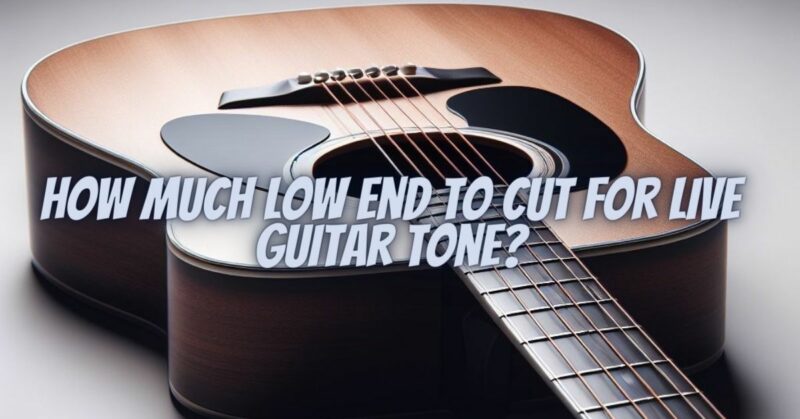Crafting the perfect live guitar tone involves a myriad of decisions, and one crucial element is the management of low-end frequencies. Striking the right balance between a full, powerful sound and avoiding muddiness is essential to achieving a professional and clear live guitar tone. In this comprehensive article, we will explore the factors that influence how much low end to cut for live guitar tone and provide practical tips for achieving the optimal balance.
The Importance of Low-End Control
Low-end frequencies, often associated with bass and kick drum, can contribute to a thick and powerful sound when used correctly. However, excessive low end can result in a muddied mix, masking other instruments and making the overall sound less defined.
Factors Influencing Low-End Management
Several factors come into play when deciding how much low end to cut for your live guitar tone:
- Genre and Playing Style: The genre of music you’re playing and your playing style heavily influence your low-end requirements. Rock and metal may benefit from more low end, while funk and blues may require a tighter sound.
- Amp and Speaker Choice: The type of amplifier and speaker cabinet you use can greatly affect the amount of low end in your tone. Some amplifiers naturally produce more bass, while others are known for their tightness.
- Room Acoustics: The acoustics of the performance venue or stage can impact how low frequencies behave. Smaller, reflective rooms may require more low-end control than larger, acoustically treated spaces.
- Instrument Choice: Different guitars and pickups can produce varying amounts of low-end frequencies. Humbuckers tend to be warmer and thicker, while single-coils often have a brighter and tighter sound.
- Band Dynamics: Your role in the band and the instrumentation of the group affect your tonal choices. If your band has a bass player, you may need to cut some low end to avoid clashing frequencies.
Practical Tips for Cutting Low End
Here are some practical tips to help you cut the right amount of low end for your live guitar tone:
- Use High-Pass Filters: Most amplifiers and pedalboard EQs have a high-pass filter. Start by rolling off some low end and gradually increase it until you find the right balance. This helps remove unwanted rumble and muddiness.
- Scoop the Mids Sparingly: While scooping the mids can create a heavy sound, it can also lead to a loss of clarity and definition. Use this EQ technique sparingly to avoid getting lost in the mix.
- Adjust the Bass Control: Many amplifiers have a dedicated bass control. Begin with it set to a moderate level and make small adjustments as needed.
- Experiment with Different Speaker Cabinets: Changing your speaker cabinet can have a profound impact on your low-end response. Consider experimenting with cabinets that offer different tonal characteristics.
- Listen to the Mix: Continually assess how your guitar tone fits within the context of the band. Listen for muddiness, clashes with the bass, or any frequencies that need adjustment.
- Consider a Clean Boost or EQ Pedal: A clean boost or EQ pedal can help shape your low-end response on the fly, allowing you to adapt to different venues and playing situations.
The right amount of low-end cut for your live guitar tone is a matter of careful consideration, experimentation, and adaptation. There is no one-size-fits-all approach, as it depends on various factors, including your genre, equipment, and the specific venue. By being attentive to your tone, actively listening to the mix, and making informed adjustments, you can achieve a live guitar tone that is not only powerful but also clear, defined, and uniquely your own.


